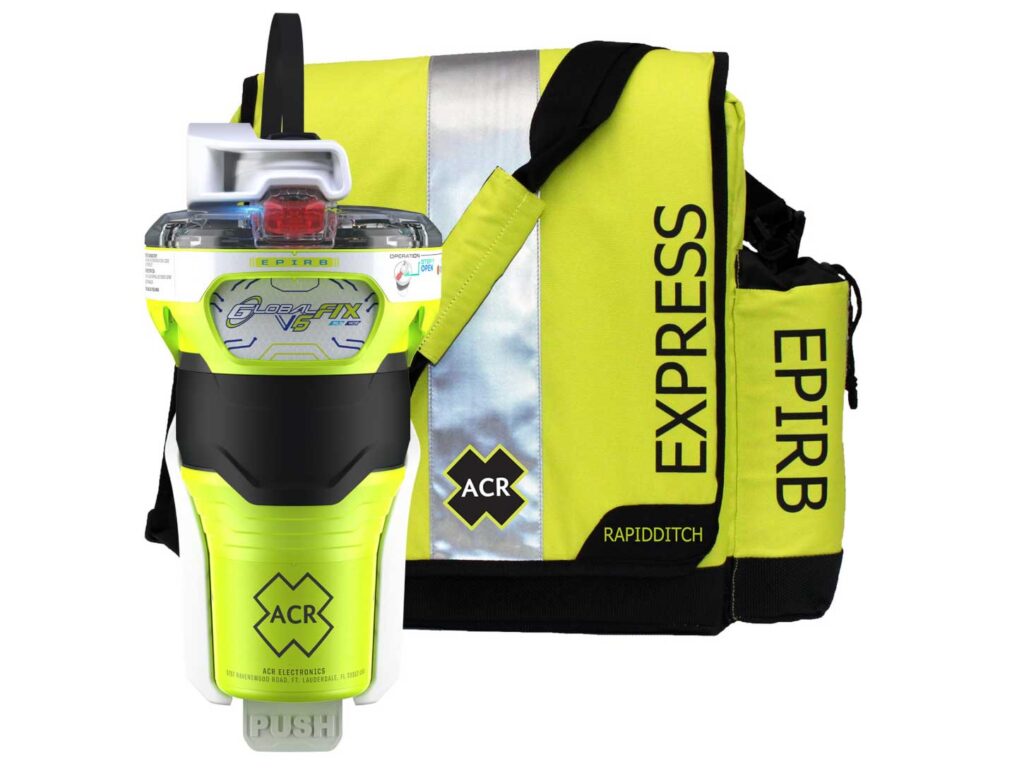ACR and Fluidity: Great Loop Episode Two
 Registering beacons, like this EPIRB, makes it more effective and thus makes your crew safer.
Courtesy ACR
Registering beacons, like this EPIRB, makes it more effective and thus makes your crew safer.
Courtesy ACR
Bill and Michelle Doster’s journey around the Great Loop aboard their Carver Yacht, Fluidity, serves as a practical example of effective beacon use. In this episode of “ACR and Fluidity: The Great Loop,” proper registration and knowledge of safety equipment are shown as proven essentials for successful long-distance boating adventures. Their insights underscore the importance of preparation and registration in ensuring safe and enjoyable maritime experiences.
The registration of 406 MHz rescue beacons, such as Personal Locator Beacons (PLB) and Emergency Position Indicating Radio Beacons (EPIRB), is critical for ensuring successful maritime rescues. These devices, when registered correctly, significantly enhance the efficiency of search and rescue operations by providing vital information about the vessel and its crew.
View this post on InstagramA post shared by Boating Magazine (@boatingmagazine)
Registration Process for U.S. ResidentsU.S. residents have multiple options for registering their beacons, each offering different conveniences and requirements.
Online RegistrationThe most efficient way to register a beacon is online through the National Oceanic and Atmospheric Administration (NOAA) website. This process is quick and allows users to verify and submit their information easily. Register your beacon here: beaconregistration.noaa.gov/RGDB/index.
BoatUS also offers beacon registration.
Other Registration MethodsFor those who prefer traditional methods, mailing the registration form to NOAA is also an option. It’s crucial that the form is legibly filled out to prevent errors in the registration database, which could delay rescue operations.
As an alternative, beacon registration forms can be faxed. To avoid potential entry errors, it is recommended to confirm the clarity and correctness of the information before sending.
Post-Registration VerificationOnce registered, users receive a confirmation letter, a proof-of-registration decal, and a copy of their registration. It’s important to ensure that all details on the label match those on the beacon and to place the decal in the designated area on the device.
Registration For Non-US BoatersFor non-U.S. residents, the registration process varies by country, typically facilitated by sales agents at the time of purchase. Many countries also support online registration through the International Beacon Registration Database. This allows for a streamlined process, ensuring the device is correctly assigned to its owner.
Read Next: Using DSC to Send an Electronic Mayday
Regulatory and Legal Information For Beacon RegistrationIn the United States, beacon registration is governed by the Code of Federal Regulations under Title 47. NOAA oversees the registration process and offers assistance through their dedicated support channels for any help required during the registration or verification stages.
Proper registration of a 406 MHz beacon is not only a regulatory requirement but also a crucial step in enhancing safety during maritime operations. Accurate and up-to-date registration information improves the chances of swift rescue responses, leveraging the advanced technologies embedded within the beacons.
The post ACR and Fluidity: Great Loop Episode Two appeared first on Boating Mag.
- Home
- About Us
- Write For Us / Submit Content
- Advertising And Affiliates
- Feeds And Syndication
- Contact Us
- Login
- Privacy
All Rights Reserved. Copyright , Central Coast Communications, Inc.